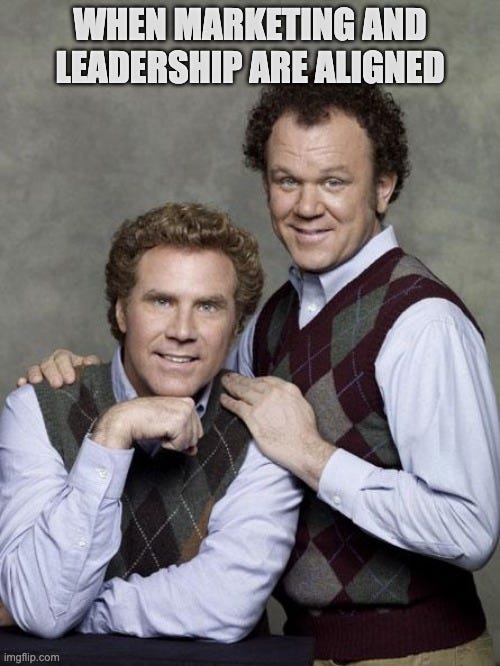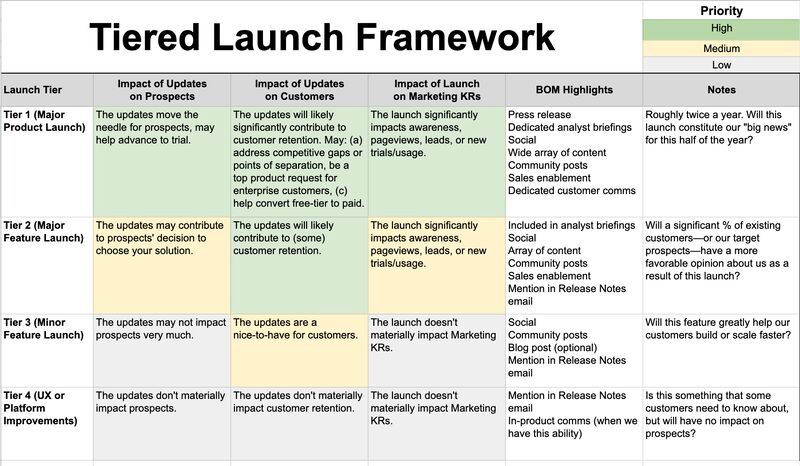Getting leadership buy-in as a marketer (part 1)
Two questions to ask leadership to set yourself up for success
“Life is too short to work for a CEO who doesn’t get marketing”
You’ve more than likely heard this quote floating around on LinkedIn, especially in the B2B marketing circles.
It’s a great quote and paints the best-case scenario for every marketer - working for a CEO or leadership team that simply gets marketing.
While we’d all love to work for a CEO who gets marketing from day one, the reality is that more often than not, that’s the exception, not the norm.
And it’s our job to help them “get” marketing
In part 1 of this 3-part series, we’re going to cover the first step to helping leadership understand and come around to how marketing in today’s world works.
Set the stage with 2 questions
Before joining Loxo, I worked at Refine Labs, a B2B marketing agency and our clients were companies looking to shift to a marketing strategy that works with today’s buyers.
Our typical client would have a few key champions, such as a Head of Marketing tasked with ambitious growth goals or VP of Sales tired of their team getting bad “leads”, who helped bring us on.
From there, it was common to have other members of their organization be skeptical of us early on. I mean, here we were promising to increase pipeline + revenue, decrease sales cycle length, increase win rates, AND decrease their CAC + CAC payback periods, all with the same budget they’d been spending. Let’s be honest, if I were in their shoes, I’d be skeptical of that, too.
So for step 1 with these clients, before we even got into building or executing, was to help them understand the approach we take and how it translates into a successful marketing strategy for them.
And I’d often do that with these two questions:
1) Would you rather hit your lead goal, but miss your pipeline goal? Or would you rather miss your lead goal, but hit your pipeline goal?
Purpose: to get them to zoom out for a moment and explicitly say what’s more important to them - leads or pipeline.
Any individual who makes it to a leadership position should be answering with missing the lead goal but hitting the pipeline goal. After all, pipeline and revenue are what keeps a business running, not leads.
If you happen to have that member 1% in the room who says they’d rather hit the lead goal…
…run, fast. That’s a sinking ship.
2) Tell me about the last purchase you helped make here. What brought it to your attention? How did you go about the path to purchase?
Purpose: to get them to realize a LOT of untrackable items influenced their decision.
Tell them to take their time, really think about this, and then go through everything that comes to mind - no detail is too small.
And what you’ll hear are things like:
A peer of mine uses it
I was listening to a podcast where it was mentioned
I saw an ad of theirs on LinkedIn
A post by their CEO was shared in our company’s Slack
I did a google search on “best [category name] software”
The list will go on, but what’s important to note and call out in the conversation here is that it’s a mix of both trackable AND untrackable items. Too many companies only focus on what can be tracked or lead to an immediate conversion.
And unfortunately, that overemphasis comes at the expense of the activities that are driving the majority of your future business.
Stay tuned for part 2 of 3 next week where we’ll get into how to use data to further support and validate this new strategy.
One LinkedIn post I bookmarked this week
Carilu Dietrich shared this post this past week that had me hooked from the first line. She noted that the framework was based on Forrester’s Launch Tier Model + how they use it to establish expectations before taking action.
You’ll notice this is the second time expectations have come up in today’s newsletter.
Intentional? No
Indicative of what successful marketing leaders do within their organizations + something we all should be thinking about more? Absolutely
One podcast episode I enjoyed this week
“I had a cat, and I really liked the cat, and it died at 2 years old. And I remember being really bummed about it and began thinking ‘How can I not think about this?’ And the only reason I was bummed is because I think that he should have lived longer.
I was like, ‘What if cats only lived six months and I got to have him for 2 years?’ I’d probably be pretty stoked about that. And all of a sudden I was significantly less sad about it. I was like, ‘I got to have him for 2 years.’
And so I think for me, for us, if we were to change our expectations, like people think they should live until 100, which is kind of interesting because the average life expectancy is 74. And if you’re 36 you’re middle-aged, if you actually do the math.
If I expected that I was supposed to have lived 20 years and I made it to 33, I’m stoked. So I’m good with it. If I die tomorrow, the only reason I would be upset was if I demanded from the universe that I live longer. But 500 yeras ago, the average life expectancy was 35…”
I swear this was not intended, but as I’m wrapping up this final section and seeing that quote above be all about expectations, that can only be seen as yet another point emphasizing how critical expectations are in everything we do.
That was one of a handful of really interesting, and quite deep, conversation points brought up in an episode of Diary of a CEO between Alex Hormozi and Steven Bartlett. A few others I enjoyed during the conversation:
Caring about what others think
What ignorance can cost you
An amazing interview question to ask to understand someone’s work ethic
And for anyone interested, here’s a playlist I add to each week with some of my favorite podcast episodes:
See you next week,
Sam





